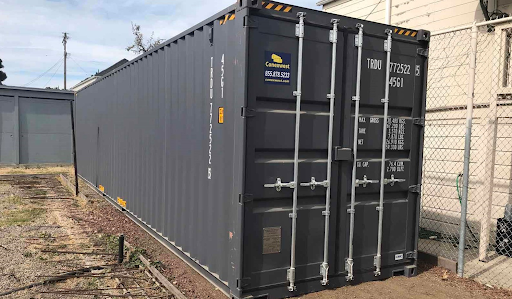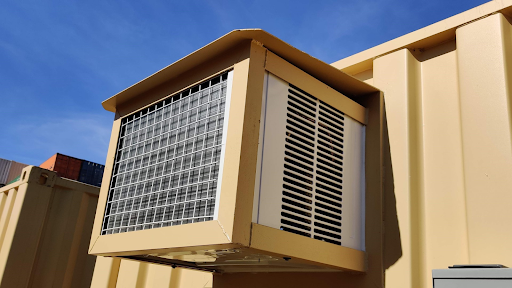Guide to Building a Shipping Container Home Gym
Get a quoteBuilding a Shipping Container Home Gym
Key Takeaways
- Building a shipping container home gym is more cost-effective than traditional home gym extensions.
- Shipping containers can be easily customized to meet your fitness needs and preferences.
- Containers are durable and weather-resistant, allowing you to create a long-lasting workout space.
- Conexwest provides high-quality shipping containers in sizes ranging from 10ft to 45ft.
Why Build a Shipping Container Home Gym
- Compact Design: Shipping containers are available in sizes that can fit into various spaces while still accommodating essential gym equipment.
- No Gym Membership Fees: Owning a shipping container gym eliminates ongoing gym membership costs. This can lead to significant savings over time, especially for those who might not regularly use a commercial gym.
- Customization: Shipping containers can be customized easily. You can equip the space with workout equipment, such as squat racks or treadmills, and design the layout to suit your workout preferences.
- Privacy: A home gym in a shipping container provides a private space for workouts, which can be more comfortable for individuals who prefer not to exercise in public gyms.
- Portability: Shipping containers are inherently portable, which allows you to relocate your gym if you move.
- Commercial Opportunities: For those interested in starting a business, shipping containers can be converted into commercial gyms. They can be stacked or connected to create larger spaces.
- Durability and Weather Resistance: Shipping containers are built to withstand harsh conditions, which makes them a durable choice for a gym that can be used year-round without concerns about wear and tear.
- Quick Assembly: Compared to traditional construction, setting up a gym in a shipping container can be faster and less labor-intensive.
- Environmental Benefits: Repurposing shipping containers reduces the need for new building materials.
Conexwest, a leader in shipping and storage solutions based in Northern California, offers new, used, and refurbished containers from 10ft to 45ft, with fast delivery within 3-7 days and container fabrication options like adding shelves and locks. We serve over 10,000 customers nationwide, including prestigious clients like the U.S. Navy and Google. As an ISO 9001 and AWS-certified company, we ensure top quality and competitive pricing. |
Steps to Building a Shipping Container Home Gym
1. Choose the Right Container

The right container is of optimal size and condition
Consider the size based on your available space and the equipment you plan to use. Standard containers come in 20-foot and 40-foot lengths, and you should check that the container is in good condition - free from rust or structural damage.
2. Plan the Layout
Before any modifications, sketch a layout for your gym. This should include the placement of equipment, storage solutions, and any additional features like windows or doors.
3. Create a Solid Foundation
A stable foundation is important for your shipping container gym. Depending on your location and the weight of the container, you can use concrete blocks, timber, or a concrete slab. This foundation will support the container and prevent moisture issues from the ground.
4. Insulate the Container
Insulation is important for maintaining a comfortable temperature inside the container, especially in extreme weather conditions. You can use foam board insulation, spray foam, or other materials to insulate the walls and ceiling. Proper insulation also reduces outside noise, which makes your workouts more enjoyable.
5. Install Electrical and Lighting
To create a functional gym, you’ll need to install electrical wiring for lighting and outlets. This step should be performed by a licensed electrician for safety and compliance with local codes. Adequate lighting is essential for a motivating workout environment, while outlets will allow you to use electrical equipment and devices.
6. Add Ventilation

Ventilation is a must to maintain the internal temperature of a home gym
Good ventilation is necessary to maintain air quality and comfort during workouts. Since shipping containers lack windows, consider installing them. Or, you can also go for vents or HVAC systems to facilitate airflow. This step helps prevent humidity buildup and keep the space fresh, ensuring a pleasant workout environment.
7. Install Flooring
Choosing the right flooring is important for safety and comfort. Options like rubber tiles, vinyl, or hardwood can provide a non-slip surface that is easy to clean. Check that the flooring can withstand heavy equipment and is impact-resistant - this will protect both the floor and your equipment.
8. Customize the Interior
Once the basic structure is in place, customize the interior to suit your lifestyle and needs. This includes painting the walls, adding storage solutions like shelves or cabinets, and arranging equipment in a way that maximizes space and functionality.
9. Add Gym Equipment
Select and install the gym equipment based on your fitness goals. This could range from free weights and benches to cardio machines. All equipment needs to be securely anchored and there should be enough space to move around safely while exercising.
10. Finalize Safety Features
Finally, add safety features such as fire extinguishers, first aid kits, and emergency lighting. These elements are essential for a safe workout environment.
Common Mistakes to Avoid When Building a Shipping Container Home Gym
- Ignoring Local Regulations: Failing to check local zoning laws and building codes can lead to legal issues or the need for costly modifications later on.
- Overcrowding the Space: Trying to fit too much equipment into a small container will lead to a cramped and unsafe environment.
- Neglecting Proper Ventilation: Insufficient airflow can lead to a stuffy and uncomfortable atmosphere, which may discourage workouts and create moisture issues.
- Poor Lighting Choices: Inadequate or harsh lighting will create an uninviting atmosphere that affects motivation and safety during workouts.
- Using Inappropriate Flooring: Choosing the wrong type of flooring can lead to safety hazards, such as slips or damage to equipment, and will affect comfort during workouts.
- Not Securing the Container: Forgetting to properly anchor the container can lead to stability issues, especially in adverse weather conditions.
How Conexwest Can Help You Build a Shipping Container Home Gym
Finding the Right Container
Our inventory has a wide variety of shipping containers. If you are not sure which one to buy, we can help you choose between new or used and large or small containers based on your budget and requirements.
Customization Options
You can choose to add features like windows for natural light, ventilation systems, and insulation to maintain a comfortable temperature year-round. We can also help you design the interior layout so that you have enough space for the equipment while preventing clutter.
Ongoing Support
If you need assistance with maintenance, upgrades, or additional modifications, we’re here to help you keep your container in top condition.
If you are ready, click the link below to discuss your requirements and get a quote.
Frequently Asked Questions (FAQs)
- What size container is best for a home gym?
The size of the container depends on your space requirements and the type of equipment you plan to include. A standard 20-foot container is sufficient for most home gyms. However, if you need more space, a 40-foot container may be a better option.
- Do I need a permit to set up a shipping container gym?
Permit requirements vary depending on your location. It's important to check with your local zoning laws and building codes to determine if you need a permit for your shipping container gym. In some cases, you may need a permit for the foundation, electrical systems, or modifications to the container.
- What equipment can I fit in a shipping container gym?
You can fit a variety of gym equipment in a shipping container, including free weights, benches, and cardio machines. The layout can be customized to accommodate your fitness needs.
- Is a shipping container gym secure?
Yes, shipping containers are built from strong, durable materials, which makes them safe for storing gym equipment. You can also add locks or security systems for added peace of mind.
- What services does Conexwest provide beyond selling containers?
In addition to selling and renting containers, we have a full suite of services to support our customers. This includes structural engineering, container repairs, hauling and transportation, and depot storage. We're a one-stop shop for all your container needs.
